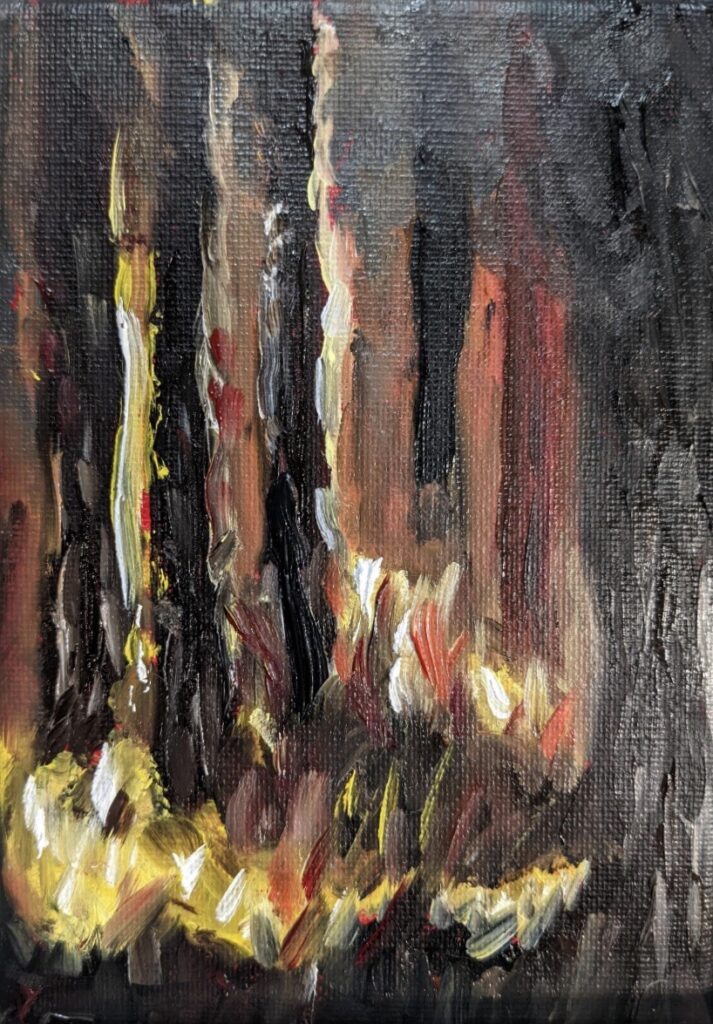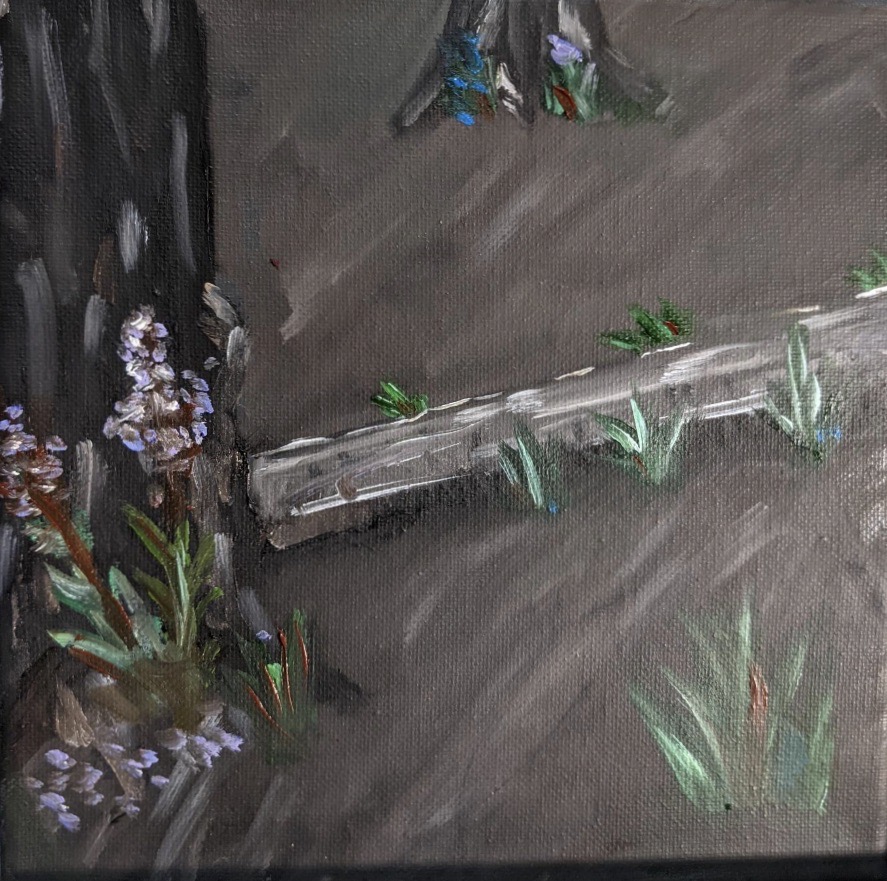“Restitution stories attempt to outdistance mortality by rendering illness transitory. Chaos stories are sucked into the undertow of illness and the disasters that attend it. Quest stories meet suffering head on, they accept illness and seek to use it.” (Arthur Frank, The Wounded Storyteller, page 115)
This painting attempts to capture the emotions behind the three forms of illness narratives, which are arranged in a triptych or three-part series to emphasize the central importance of the quest narrative. Looking at illness as narrative helps us be more understanding and compassionate, as we recognize themes inherent in their view of suffering. These paintings also tell an overarching story of loss, chaos, confusion leading towards healing and transformation in the setting of a forest fire. These are oil paintings on canvas.
The chaos narrative has blood-red undertones, which peek through some of the thinner layers of paint and depicts a forest amid a raging wildfire. The bleak black, gray, and brown trees are illuminated solely by the light of the fire which consumes them. During the chaos narrative, there is no time to describe your distress; there is only living it. You are swept along by the ferocity of the illness and feel that you have lost control and choice. It is terrifying. It feels as if it will never end. It’s almost impossible to see the future.
The restoration narrative has bright green and yellow undertones, which add to the joyous, happy feeling of the sunrise over the burned forest. Despite the tragedy which occurred, the sun is rising, and a new day is dawning. The trees in the foreground still stand, though badly burnt. There are still dark clouds in the sky, but there is feeling of hope in the air. During the restoration narrative, you feel as if everything will return to normal soon, that the illness will be put behind you, and that all will be well.
The quest narrative depicts the transformation of the burned forest as new life begins to grow in the fertile soil laid by destruction. Flowers and grasses are beginning to grow at the bases of the crumbling burnt trees, adding beauty to a desolate landscape. During the quest narrative, you find purpose in your suffering and feel that illness becomes a transformative time. As a phoenix rises from the ashes, your illness-induced transformation changes your perspective, your story, and perhaps your values and ideals.The quest narrative is realistic, yet hopeful that there is meaning to suffering.
Understanding the patient experience as they experience aspects of one or all of these illness narratives is key for a physician. Patient narratives are complex but thinking of them in this framework can help increase empathy and understanding.
These paintings were created following conversations in the Letters of Medicine Elective, Radical Listening at the End of Life with Dr. Susan Sample and Dr. Jenny Wei.





